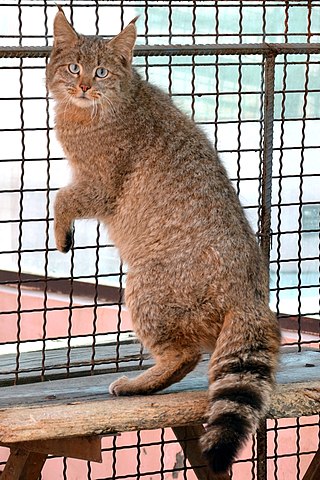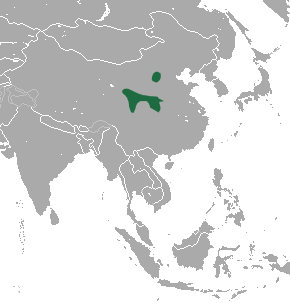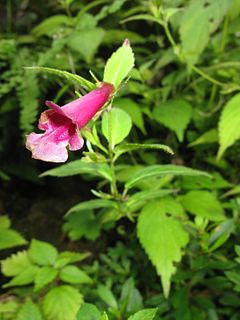
The Chinese mountain cat, also known as Chinese desert cat and Chinese steppe cat, is a small wild cat endemic to western China that has been listed as Vulnerable on the IUCN Red List since 2002, as the effective population size may be fewer than 10,000 mature breeding individuals.

Artemisia is a large, diverse genus of plants with between 200 and 400 species belonging to the daisy family Asteraceae. Common names for various species in the genus include mugwort, wormwood, and sagebrush.

Lingzhi, Ganoderma lingzhi, also known as reishi, is a polypore fungus native to East Asia belonging to the genus Ganoderma.

Inula is a genus of about 80 species of flowering plants in the family Asteraceae, native to Europe, Asia and Africa.
Bonia is a genus of Chinese and Vietnamese bamboos in the grass family.

Anaphalis is a genus of herbaceous and woody flowering plants within the family Asteraceae, whose members are commonly known by the name pearl or pearly everlasting. There are around 110 species with the vast majority being native to central and southern Asia. There is one species native to North America that is fairly well known and popular in cultivation, namely the western pearly everlasting.

Ling-Ling and Hsing-Hsing were two giant pandas given to the United States as gifts by the government of China following President Richard Nixon's visit in 1972. As a gift, the U.S. government sent China a pair of musk oxen.

The Japanese house bat or Japanese pipistrelle is a species of vesper bat. An adult has a body length of 3.6–4.8 cm (1.4–1.9 in), a tail of 2.9–4.0 cm (1.1–1.6 in), and a wing length of 3.2–3.6 cm (1.3–1.4 in). It prefers to roost under the ceiling or inside the roof of old buildings. It is found across East Asia, from China and Taiwan into the Ussuri region, the Korean Peninsula, and Japan.

Hodgson's bat, also called the copper-winged bat or black-and-orange myotis, is a species of vesper bat in the genus Myotis, the mouse-eared bats. Favouring mountain forests, it is found throughout Central, Southeast, and East Asia, from Afghanistan to Taiwan. It is about 5 centimetres (2.0 in) long and is distinguished from most other species of bat in this range by its yellowish colouration.

Anthemideae is a tribe of flowering plants in the family, Asteraceae, and the subfamily Asteroideae. They are distributed worldwide with concentrations in central Asia, the Mediterranean Basin, and southern Africa. Most species of plant known as chamomile belong to genera of this tribe.

Cremanthodium is a large genus of flowering plants in the daisy family.

Ajania is a genus of flowering plants in the daisy family, described as a genus in 1955. The genus is native to temperate Asia, primarily Russia and China. It is named after the Russian port city Ayan in the Khabarovsk Krai region of the Russian Far East, on the coast of the Sea of Okhotsk.
Diplazoptilon is a genus of flowering plants in the daisy family.
Dolomiaea is a genus of Asian flowering plants in the family Asteraceae.
Nannoglottis is a genus of Asian flowering plants in the family Asteraceae.
Stilpnolepis is a genus of Asian plants in the chamomile tribe within the daisy family.
Syncalathium is a genus of Chinese plants in the tribe Cichorieae within the family Asteraceae.

The Tsing-ling pika is a species of pika endemic to the mountains in Central China. It inhabits mountainous forests and shrublands. It is a poorly known species.

Qianzhousaurus is a genus of tyrannosaurid dinosaurs that lived in Asia during the Late Cretaceous period. There is currently only one species named, the type species Qianzhousaurus sinensis which is a member of the tribe Alioramini within the group, and most closely related to Alioramus, another alioramin.

Chelonopsis is a genus of plants in the family Lamiaceae, first described in 1865. It is native to China, Japan, and the Western Himalayas.













